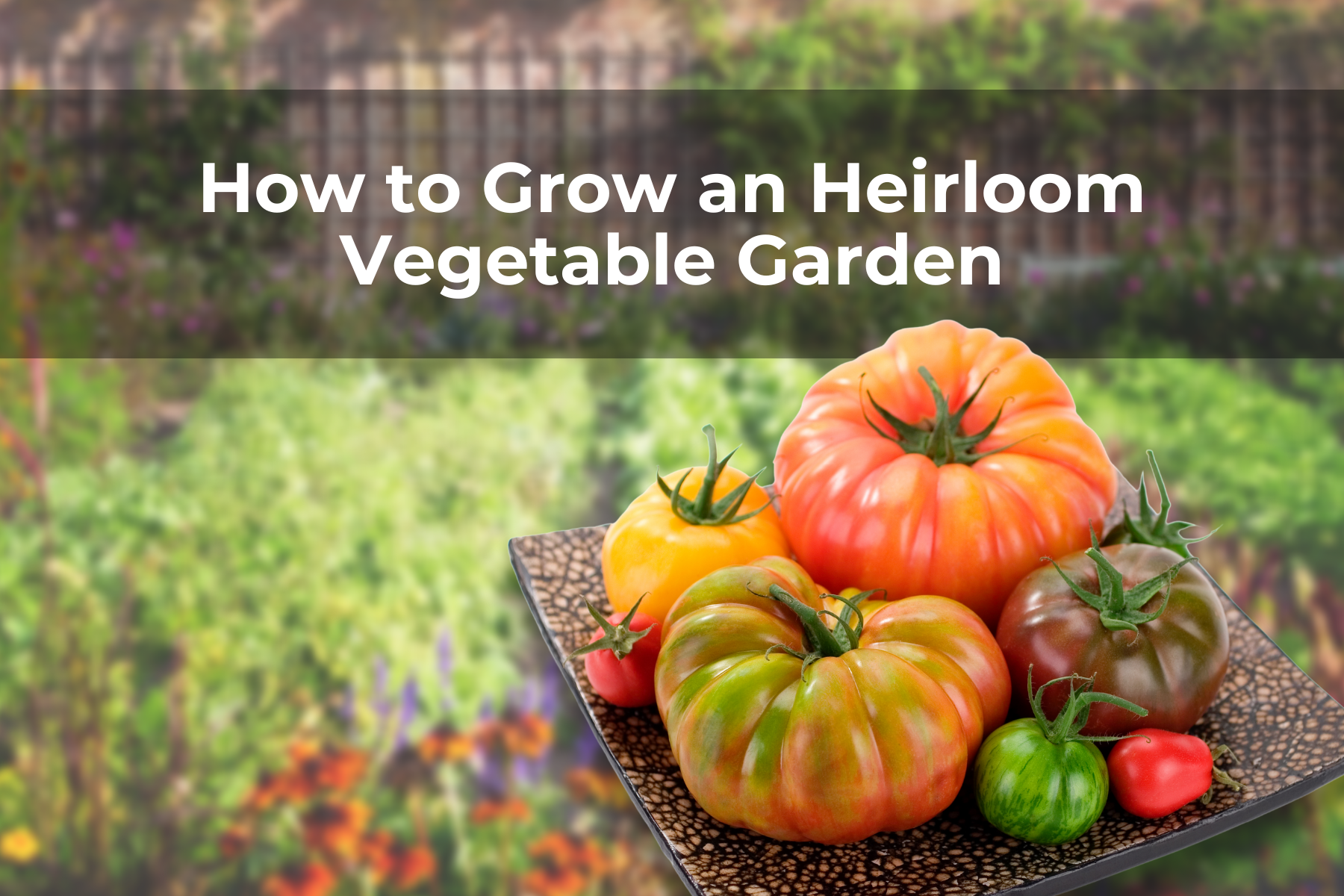Last Updated on April 15, 2024 by Real Men Sow
Heirloom vegetables refer to plants that have been grown, selected, and replanted over many years. They can be traced back to a specific time or place in the past. Although there is no minimum age or generation that a vegetable must have been grown to be considered an heirloom, it is generally agreed that heirlooms are those that have been grown for at least 50 consecutive years.
Heirloom Seeds: Saving and planting
Heirlooms can be replanted and grown again as a pure strain. The same goes for purebred animals. If you plant hybrid seeds, however, you will not be able to save them. The seeds that grow back to their parent plants, or show strange traits, are usually not good for eating. It’s sort of like a mutt.
Just like mutts and hybrid vegetables, they are equally loved and worthy of a home in your garden (garden). However, depending on your needs and desires in the garden, you may want to grow heirloom seeds.
How To Grow Heirloom Vegetables
Many heirloom vegetables you want to grow must be grown from seeds. It is difficult to find established heirloom seedlings at nurseries so it will be necessary to start your seeds.
Growing heirloom vegetable seeds is the same as growing other vegetables from seeds. They don’t require any special attention or care. To get true heirloom vegetables, you will need to ensure that you start with heirloom seeds.
Open-Pollinated Fruits and Vegetables
These are pure, and can be saved as seeds (so long they are self-pollinating types of vegetables like tomatoes, beans and peas). Squash and pumpkins can cross-pollinate with different varieties. This makes it more difficult but not impossible to save seeds.
Open-pollinated seeds may not be heirlooms, as they don’t have a traceable lineage back many generations like heirlooms. However, they are purebreds and could easily be heirlooms if you were able to save the seeds.
Technically, you can start your own heirloom seed from any open-pollinated plant. However, if the seed packet bears the abbreviation F1 on it, they are not heirloom. F1 is the acronym for “first generation” seed and it means they are hybrid seeds. These are two varieties of plants that have been intentionally crossed by humans.
The Best Heirloom Vegetables You Can Grow At Home
It’s difficult to determine which heirloom vegetable varieties are best for your garden. This is because it all depends on the qualities you are looking for. Here are some classic and popular heirloom varieties that have been staples in many gardens, both in today’s and past.
-
- Calabrese Broccoli
- Chicago Pickling Cucumbers
- Danish Ballhead Cabbage
- Danver Carrots
- Early Fortune Cucumbers
- Golden Bantam Corn
- Kentucky Wonder Green Beans
- Parris Island Company Romaine Lettuce
- Pink Brandywine Tomatoes
- Red Bull’s Horn Sweet Red Peppers
- San Marzano and Amish Paste Tomatoes
- Sugar Pumpkins
Unusual Heirloom Vegetables
It’s the part of the heirloom vegetable garden that is the most fun. You get to try new and unusual varieties of vegetables that you can’t find anywhere else.
Dragon Tongue (shelling beans)
They can be eaten whole, just like wax beans, until the outer shell shows its distinctive purple streaks.
French Breakfast Radishes
These are long and slim radishes that have red tops that taper towards white bottoms. These radishes look straight out of Beatrix Potter’s books!
Paris Market Carrots
These carrots are rounder and more ball-like than the long, thin carrots were used too. Excellent flavor, and great producers in the garden!
Chioggia beets
These are beautiful, candy-striped beets that have alternating red and blue rings.
Radicchio di Lusia Radicchio (radicchio)
An original vegetable that you can add to your garden. This Italian heirloom is light and almost lime green with red-purple spots. It adds beauty to your edible garden!
Glass Bead Corn
The most beautiful type of corn available. The kernels come in a rainbow and almost appear transparent, making them look like glass beads. Pops well.
Cucamelon cucumbers
Cucamelons are also known as Mexican Sour Gherkins. They look and taste like small watermelons but have a slight lemony flavor. Although small fruits, cucamelons are very productive plants!
The Cherokee Purple Tomatoes
These are a dark red/purple color with a great flavor. This is one of the most popular heirloom tomato varieties.
Black Beauty Tomatoes
Also known as the “world’s darkest” tomato, is a dark purple variety that is almost black. They look very similar to blackberries.
Pink or Purple Bumble Bee Tomatoes
These beautiful cherry tomatoes look like they have stripes.
Cimmaron Romaine Salad Lettuce
This is deep red with great flavor and crisp texture.
Murasaki Purple Peppers
These are deep purple in color and small in stature. They look like a pepper, but taste more like green peppers. The garden is equally beautiful with purple flowers that bloom before they bear fruit.
Musquée d’Hiver de Provence Pumpkins
These are gorgeous, deep-ribbed French heirloom pumpkins that look as beautiful as they taste.
Long Island Cheese pumpkins
This is similar in appearance to the Musquee d’hiver Pumpkins, but the ribs sound more pronounced. These pumpkins are shorter and more squatthan large and round.
Queensland Blue Pumpkins
These are blue-green in color and have sweet golden flesh.
Rouge Vif d’Etampes pumpkins
These are also known as “Cinderella pumpkins,” another French heirloom, is a gorgeous red-orange color.
Galeux d’Eysines pumpkins
These are another French heirloom pumpkin, which is more pastel and peachy than the others. It appears to have warts!

